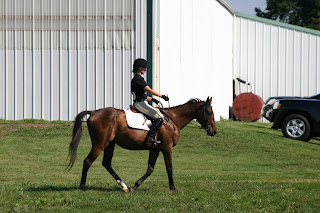Gelding is a hot topic in the horse world. Many people
prefer to ride geldings, and horses that haven’t been demonstrated to be worth
breeding are often gelded even by professional breeders. However, there is
another group of people, those who don’t geld the colt or stallion they buy or
breed, but aren’t sure what to do with him. Often, many reasons are given for
not gelding, including cost, and sometimes a human sentiment that it is cruel
to do so. With all of these questions being out there, what does the evidence
show?
Regardless, gelding removes the hormones (testosterone) from
the stallion, typically allowing the male horse to be calmer and better
behaved, often more suitable as an every-day working animal. Ideally, gelding also helps insure that only
the absolute best horses are bred, decreasing the risk of an ‘oops’ pregnancy
in the horse world, and therefore decreasing the chance of a potentially
dangerous (to the mare) pregnancy and very expensive baby afterward. Unlike
mares or stallions, geldings are typically free of the hormone-driven urges
that can make handling difficult. This is particularly true when gelding is
done in the younger horse. Gelding also allows more horses to live closely and
safely than maintaining intact stallions, particularly with mares in close
proximity.
A horse may be gelded at any age, but if it is know a horse
will not be used for breeding, gelding at less than a year of age is typically
recommended. New research has shown that any muscle a horse gains by delaying
gelding is eventually lost, and there is no net growth change with gelding at a
year. With safer practices now available, it is becoming increasingly more
feasible to geld older horses safely, allowing them a less restrictive later
life than they may have otherwise experienced.
There are some risks to gelding, like any surgery, including
swelling, infection and bleeding, but these complications are rare in a
properly sedated horse under the care of an experienced veterinarian.
The bigger risk is the inexperienced horseperson (and it
takes a LOT of experience with stallions to be
experienced) with a stallion. By nature, stallions are more aggressive than
other horses. They tend to try to dominate both other horses and human
handlers. In particular children should not be involved in handling stallions,
as their behavior is unpredictable. Stallions can potentially be kept with
other stallions, as long as mares are not around. However, if one has a mixed
herd of horses, but doesn’t plan to breed, keeping a stallion is a bad idea and
often leads to unintended foals.
So in summary? For most people geldings are a MUCH better
choice than stallions! Aside from behavior risks, accidental pregnancies,
riding preference, etc., it is also typically easier to find a home for a
gelding than a stallion, as specialty facilities are often required for them.
Equally important, only the very best horses should be bred. This means that
even though your stallion (or mare for that matter) is super sweet and
wonderful, if they haven’t won competitions, proven their soundness and
viability in the horse world and show how they handle training and work, they
probably shouldn’t breed, because only the best-behaved, best-conformation
horses should go on to make more horses. It’s already hard enough to find a
home for the ‘oops’ ones.






















































